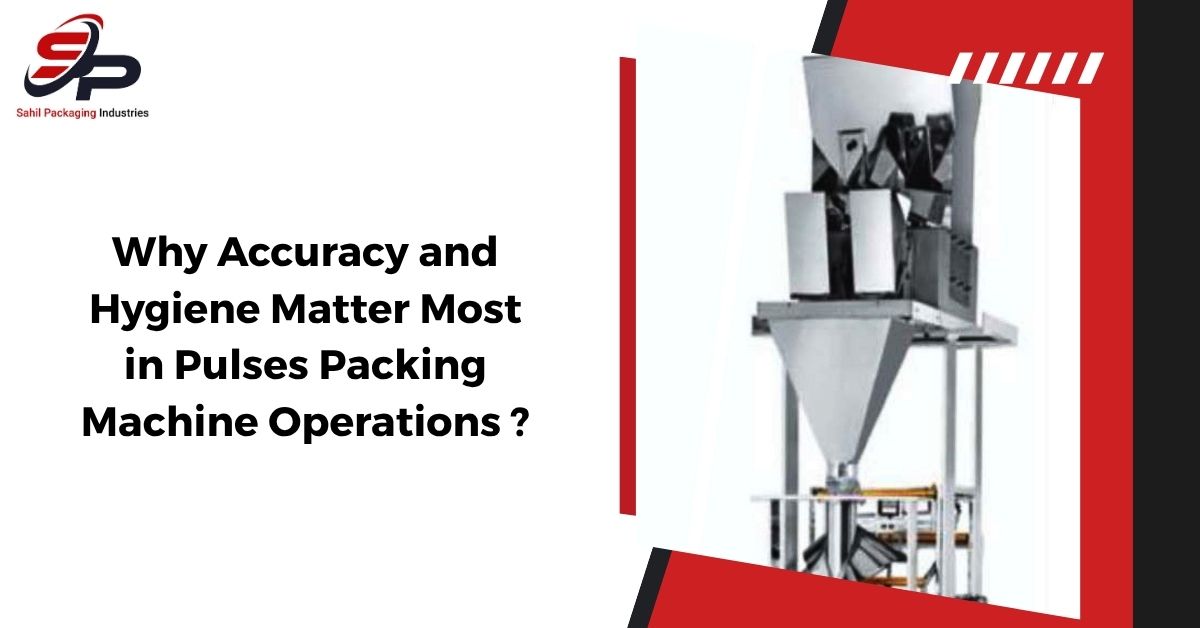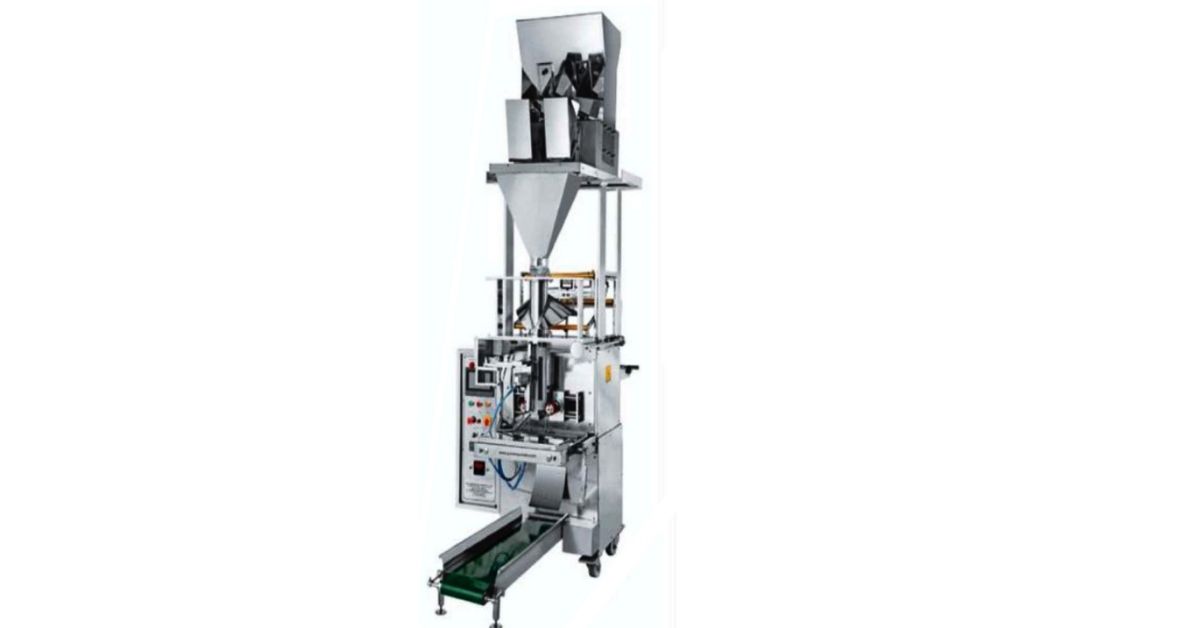
Why Accuracy and Hygiene Matter Most in Pulses Packing Machine Operations
In the highly competitive world of food building, the packing machine operations of pulses have become an indispensable part of the production line. Whether a company is packing lentils, chickpeas, green grams, or kidney beans, the role of accuracy and hygiene cannot be reduced in this process. Modern consumers not only demand safe and high-quality food products, but also expect stability in volume and packaging standards. This demand has made packing machines central to ensure efficiency, reduce wastage, and maximize the integrity of the product.
Within the first few stages of the food production line, the packing phase is probably the most tested by regulators and customers. This involves a combination of mechanical processes that ensure accurate filling, sealing, and labeling of each bag. In this context, attention to accuracy and hygiene is not just a matter of convenience; This is a main requirement for brand trust, regulatory compliance, and operational excellence.
Critical Role of Accuracy in Pulse Packing
The accuracy in the packing machine operations of pulses plays a dual role. First, it ensures that each bag has the correct weight or product volume, which maintains consumer satisfaction and trust. Second, it directly affects the cost of the manufacturing process. Incorrect filling can lead to overfilling, causing the product to increase the 12 and reduce profitability. On the other hand, not only do consumer complaints result in consequences, but also regulatory punishment and brand damage.
In the food packaging industry, particularly for products such as pulses, even minor weight anomalies can result in significant cumulative losses over time. For example, if each sack is filled with more than 5 grams and a factory produces 100,000 pouches per day, it results in a daily loss of 500 kg of product. It appears that the small margin translates into significant financial leakage. Therefore, advanced sensors and microcontroller-based systems are integrated into the packing machines of pulses to fill and control the volume with milligram-level precision.
Beyond direct product costs, the wrong filling can be interrupted by sealing and labeling, causing further disability. In the high-speed packing environment, accuracy is not a luxury is a requirement.Hygiene as a Non-Negotiable Standard
While accuracy addresses the technical performance of the pulses packing machine , sanitation is related to compliance with food safety standards. Given that pulses are consumable agricultural products that suffer from contamination during harvesting and handling, the packaging process should be clearly sanitary.
Packing machines for modern pulses are easily designed with clean-covered components to ensure food-grade stainless steel, minimum contact surfaces, and minimum risk of bacteria. Additionally, many systems are now equipped with automatic cleaning functions that reduce the need for manual intervention, reducing the risk of cross-contamination.
Automation Elevating Accuracy and Hygiene Standards
Manufacturers who fail to meet hygiene standards not only risk losing products but also face legal punishment and significant disadvantages.
The hygiene protocols incurred in packing operations include regular machine sanitization, a filtered air system, and strict control on operator hygiene. It is no longer enough for machines to perform well only they should also be an engineer for cleanliness and compliance. Equilateral accuracy and hygiene standards.
Technological progress has made automation the headlines for the packing operations of pulses. The fully automated system not only enhances speed and throughput but also maintains constant hygiene standards and levels of accuracy.
By reducing human intervention, automated packing machines reduced the possibility of contamination. Automation ensures that every step is done in a controlled, sterile environment, from the formation of the bag to the sealing and date stamping. In addition, machine-learning algorithms and IOT integration allow the real-time monitoring of the metrics and hygiene programs, which increases traceability and preventive maintenance.
In addition, these systems can self-calibrate depending on environmental factors such as humidity and temperature, which affect the flow characteristics of pulses. This self-regulation facility is a leap to ensure both quality control and efficiency.

Meeting Industry-Specific Standards and Regulations
Food packaging is ruled by many safety standards and certification requirements. Whether it is FSSAI in India, FDA in the United States, or the ISO certificate, manufacturers are forced to maintain both accuracy and hygiene in every aspect of their packaging process.
Pulse packing machines designed for compliance integrate features such as tampering-proof sealing, non-toxic inkjet printing for batch details, and real-time data logging for audit trails.
This alignment with rules not only protects manufacturers from legal risks but also acts as a mark of quality that appeals to health-conscious consumers.
Certificates act as evidence of following strict guidelines and often open doors for retail participation, export, and cooperation. Therefore, machines that facilitate easy certification processes become essential tools in scaling operations and building market trust.
Customization and Versatility in Pulses Packing Solutions
The brand of each product has unique packaging requirements based on pouch size, product type, shelf-life expectations, and customer demographics. Packing machines of optimized pulses provide versatility in packaging styles-that is, a stand-up pouch, pillow pouch, or zip pack.
These machines also allow fine-tune settings to manufacturers depending on the density of various pulses and the size of the grain, ensuring that the packing remains accurate and clean in many product types. This versatility reduces downtime between product changes and increases overall productivity.
Some machines are also equipped with nitrogen flushing systems to expand shelf life and maintain freshness. These characteristics not only align with hygiene standards but also appeal to the market premium segment, where freshness and presentation play leading roles.
Why Manufacturers Are Investing in High-End Pulse Packing Solutions
In today's rapidly developing food industry, investment in high-quality packaging solutions is not a cost but a strategic property. The increasing demand for convenience foods, branded pulses, and ready-to-eat items has increased consumer expectations around product presentation and shelf life.
The manufacturers are feeling that the packaging of all can also undo the value of the best agricultural produce. Packing machines of high-end pulses ensure not only product safety and shelf appeal but also operational reliability. The decision to invest in quality packaging machinery, with a prolonged ROI to increase the perception of low errors, low waste, and brand, is a forward-thinking step.
As food tech develops, we can expect more sophisticated solutions including AI-operated quality checks, blockchain traceability integration, and durable packaging compatibility. Staying ahead of these trends will be important for manufacturers to establish themselves as industry leaders.
Conclusion
In a highly regulated and competitive market, the twin columns of accuracy and hygiene stand as the foundation of the packaging operations of successful pulses. Machines distributed on both fronts help manufacturers to maintain compliance, build consumer trust, and achieve operational efficiency.
Since the Sahil Packaging Industry continues to work as a reliable name in building advanced packaging solutions, their commitment to innovation, hygiene, and accuracy ensures that customers are equipped for long-term success. Whether you are scaling your production or entering new markets, investing in the packaging solution of the right pulses is more than a logistical option - this is a strategic advantage.
